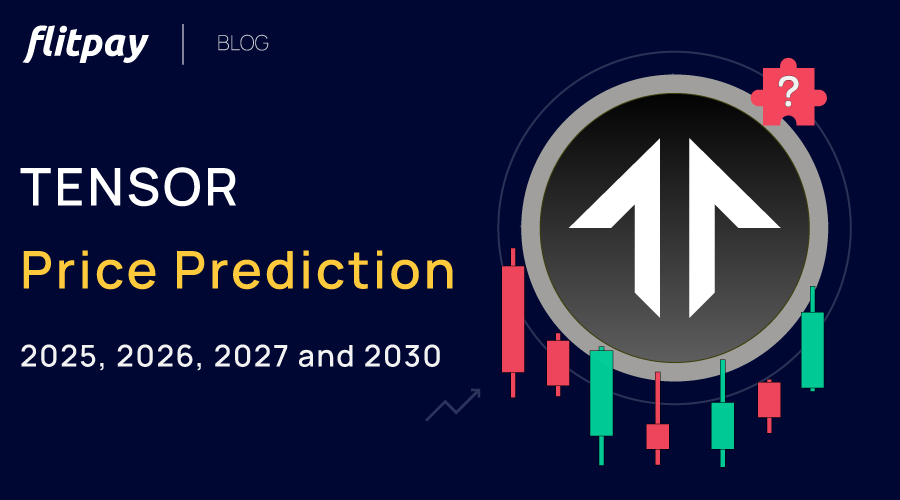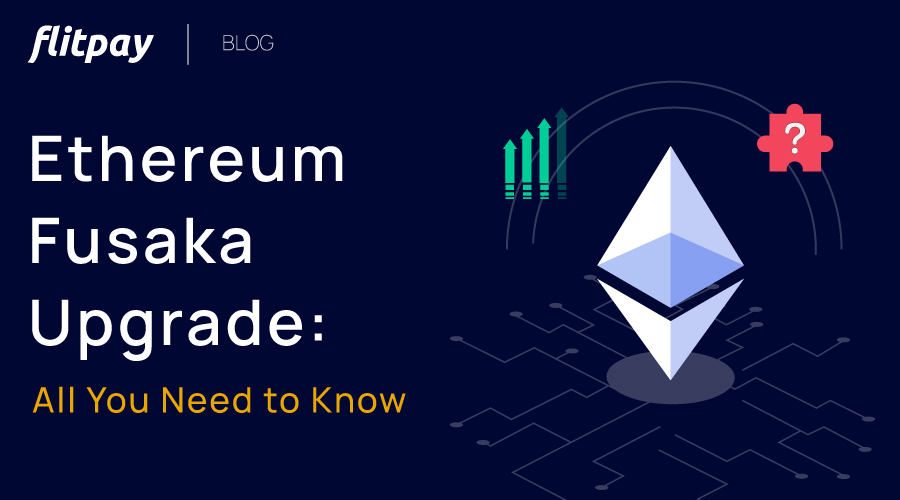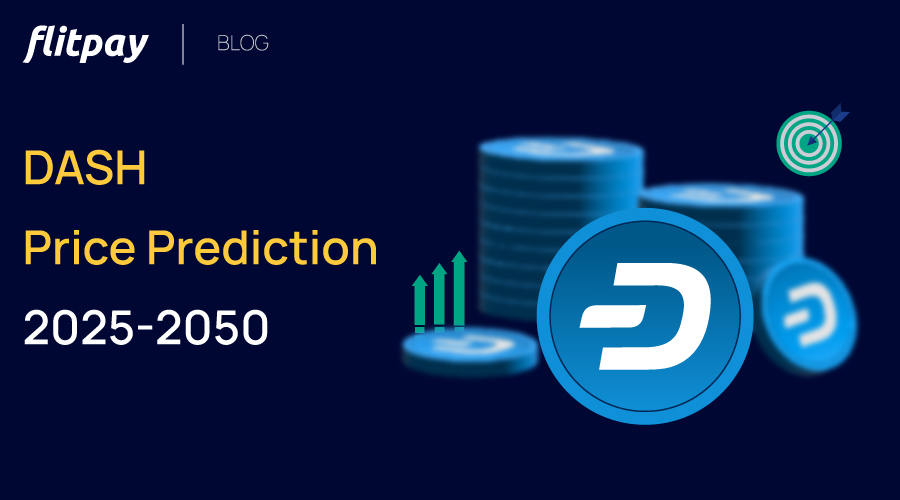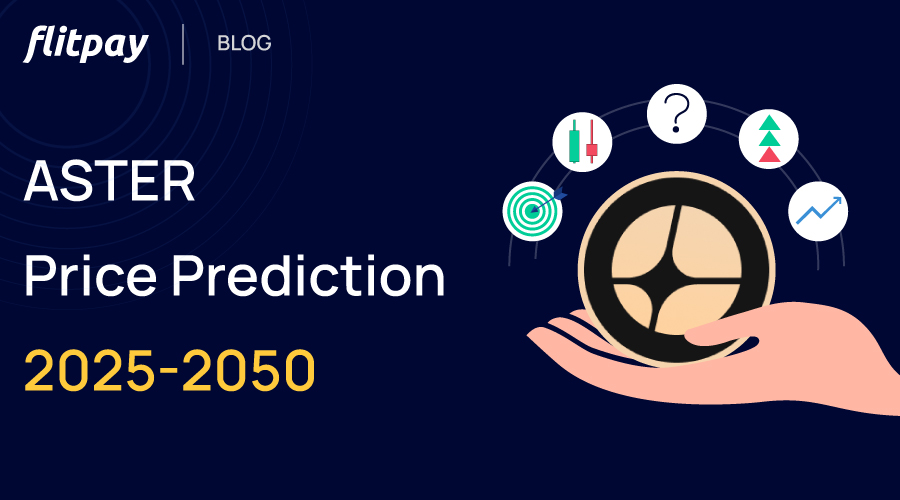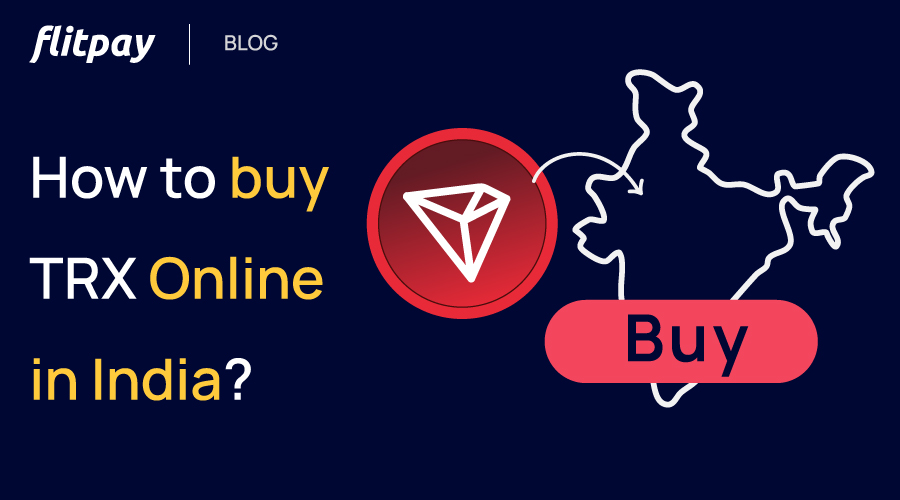Table of Contents
A Little Context
The Ethereum Pectra Upgrade
The Ethereum Petra Upgrade Date
The EIPs of Ethereum Pectra Upgrade
- EIP- 2537
- EIP- 2935
- EIP- 6110
- EIP-7002
- EIP-7251
- EIP-7549
- EIP-7685
- EIP-7702
- EIP-7691
- EIP-7840
- EIP-7623
Ethereum Pectra Upgrade Effect on ETH Price
FAQs
- What is the Ethereum Pectra Upgrade?
- What is the Launch Date of Ethereum Pectra Upgrade?
- What is EIP-3074?
- How to buy Ethereum (ETH) in India?
- Where to buy Ethereum (ETH) in India?
- Which is the best platform for Ethereum (ETH) withdrawal in India?
Time flies in the Ethereum universe!
Just as we were still catching our breath from the Dencun Upgrade, Ethereum has already rolled out its brand new Pectra upgrade on 7th May, 2025.
But what exactly is Ethereum Pectra Upgrade?
Will the Pectra Upgrade affect the ETH price too?
Answering this would require a whole blog. Lucky for you, that’s exactly what we’ve got right here!
A Little Context
Ethereum is undergoing a multi-stage strategic upgrade plan developed by its core developers. This plan, called the Ethereum Roadmap, addresses issues such as limited scalability, high gas fees, and centralization concerns associated with the Ethereum blockchain. It started with the Merge upgrade of 2022 that marked the transition of Ethereum from a PoW (Proof-of-Work) to a PoS (Proof-of-Stake) consensus blockchain. Then came another crucial upgrade called the Dencun upgrade, a fusion of the “Deneb'' and “Cancun” upgrades, in March 2024 to introduce several improvements. Now, Ethereum developers have served another crucial launch, the much awaited Ethereum Pectra upgrade, to improve the performance further.
The Ethereum Pectra Upgrade
The Ethereum Pectra Upgrade is even more significant and power-packed than the Dencun upgrade.
The Pectra upgrade consists of two planned upgrades- Prague (for the execution layer) and Electra (for the consensus layer). By combining both, the Ethereum Pectra Upgrade introduces multiple helpful improvements to Ethereum, making it more optimized, convenient and flexible than ever.
It initially consisted of 9 standard EIPs (Ethereum Improvement Proposals) and a meta-EIP comprising 11 more EIP components. While some focused on the Prague upgrade, others fell under the Electra upgrade. An EIP is like bills presented in Ethereum’s parliaments that become the new law if it receives favour from most members.
However, due to the heavy complexities involved with implementing so many enhancements at once, Ethereum developers have divided the Pectra upgrade into two phases, with one phase prioritizing 11 EIPs and the second phase implementing the rest of them. Thus, 9 EIPs from the Pectra upgrade have now been shifted to the next Ethereum upgrade, which is Fusaka.
The key enhancement from Pectra upgrade’s EPIs is EIP-7702, which aims to improve the user experience of crypto wallets by bringing account abstraction to Ethereum. EIP-7251 will induce another important change by allowing validators to increase the maximum amount they can stake from 32 to 2048 ETH. Petra will also implement many more improvements, which we will discuss in the later sections.
Ethereum Pectra Upgrade Date
Earlier, Ethereum enthusiasts were expecting the Pectra upgrade to launch in Q4 of 2024. However, it later shifted to Q1 of 2025.
As part of this launch, the Ethereum Pectra upgrade went live on the Holesky testnet on February 24, 2025, 21:55 UTC. However, it did not complete within the expected timeframe due to unclear reasons, as of this writing. For the uninformed, Holesky is the first of testnets where Pectra’s testing occurred before deploying it to the Ethereum mainnet. Once the Ethereum Pectra upgrade was successful in the Holesky testnet, its next test was scheduled for the Sepolia testnet on March 5, 2025. However, difficulties were faced in the Holesky testnet, which delayed the Ethereum Pectra Upgrade date for the Sepolia testnet. Once the testing of Pectra on both testnets (Sepolia and Holesky) became successful, the Ethereum developers released the final date for deploying it on the mainnet.
The developers finally rolled out the first phase of Ethereum Pectra upgrade for the mainnet on May 7, 2025. Phase 2 is expected to begin in late 2025 or early 2026.
EIPs of Ethereum Pectra Upgrade
EIP- 2537
EIP-2537 introduces a precompile (natively implemented smart contracts in Ethereum) for BLS12-381 curve operations to make Ethereum's BLS signature operations noticeably faster and cheaper. It also improves the performance of Ethereum validators and reduces gas costs.
Simple Explanation
Like most blockchains, Ethereum uses a key-based technique for encrypting data. This technique is called Elliptic curve cryptography (ECC). Currently, Ethereum uses the BN (Barreto-Naehrig) curve, which offers between 80 and 100 bits of security. While this level of security is sufficient, it still has scope for improvement.
EIP-2537 introduces Ethereum's new cryptographic signature scheme, the BLS12-381 elliptic curve. It can offer 120+ bits of security. Therefore, adding BLS12-381 will help Ethereum provide higher security at a reduced cost in DAO governance, roll-ups, cross-chain transfers, Zero-knowledge proofs (ZKPs) and more.
EIP- 2935
EIP-2935 consists of a code change that will benefit in the next updates when the Ethereum developers introduce Verkle trees.
Simple Explanation
EIP-2935 discusses potential enhancements to the Ethereum Virtual Machine (EVM) related to block hashes and stateless clients. Stateless clients in Ethereum refer to those light clients that do not store the entire state but only access it as needed.
Currently, the EVM assumes that its clients have access to recent block hashes, which may not be sustainable as stateless client technology evolves. Therefore, EIP-2935 suggests including block hashes in the state, which can then be bundled with other data for stateless clients. This approach is already feasible with the Merkle Tree (MPT) and will become more efficient with the Verkle trees that Ethereum developers plan to implement. In other words, it's a significant code change that will prove helpful in future Ethereum updates by allowing users to access historical block hashes without storing the entire blockchain history.
Ethereum developers organize a bi-weekly meeting series to discuss and decide on the changes to the execution layer (EL). They call these calls All Core Developers Execution (ACDE) calls. On March 28, 2024, they gathered on ACDE #184, where the ballet introduced EIP-2935. The team had a “neutral to positive” attitude towards this EIP and shared that it had no objection to including it in the Prague upgrade. However, Erigon, the second most popular Ethereum execution client, was less confident about including EIP-2935. Over it, another famous Ethereum client, Beiko, recommended discussing other EIPs and circling back to EIP 2935 later in the call. At last, they decided to implement EIP-2935.
EIP- 6110
EIP-6110 restructures the Beacon chain’s validator deposit mechanism and fixes multiple other issues that currently affect the security and efficiency of Ethereum’s Proof-of-Stake consensus.
Simple Explanation
EIP-6110 is an attempt to streamline the process of depositing funds to become a validator on the Ethereum network by making the deposit process happen directly on the execution layer. It eliminates the need for additional voting steps on the consensus layer.
Until now, Ethereum used a one-way Eth1-Eth2 bridge that facilitates the transfer of ETH from the execution layer to the consensus layer. This bridge plays a crucial role in Ethereum’s beacon chain operations by serving as the entry point for anyone willing to participate in the network consensus. By creating a link between the execution and consensus layers, this bridge processes the collateral deposits from validators on Ethereum. However, the Eth1-Eth2 bridge uses a complex approach to manage these deposits, paving the way for problems like low efficiency, slow processing and bad user experience. It led to discussions on streamlining the process to simplify software design and improve user experience.
The EIP-6110 addresses this concern in the Ethereum Pectra upgrade. It discards the Eth1-Eth2 bridge and introduces a new way of transferring validator deposits to the Beacon Chain. This involves attaching the validator deposits to the Execution Layer block structure and shifting the responsibility of deposit approval and validation to the Execution Layer. It eliminates the need for deposit voting from the Consensus Layer, saving time and simplifying the process.
EIP-7002
EIP-7002 lets validators initiate partial or complete withdrawals via their Execution Layer (EL) withdrawal credentials.
Simple Explanation
As we know, Ethereum smoothly transitioned from Proof-of-Work (PoW) to Proof-of-Stake (PoS) consensus via the famous Merge Upgrade to reduce the environmental impact and improve scalability. This transition changed the mining-based consensus of Ethereum to a staking-based one where anyone can become a validator node by staking 32 ETH on the Beacon Chain. The validators have two options: solo staking and delegated staking.
Solo staking does not require any middleman and lets you keep 100% of rewards received for validating. However, you have to manage multiple responsibilities and need technical expertise to run them. The other way is to go for delegated staking, where you become a validator by providing 32 ETH. But you delegate the responsibility of operating the validator node to a third party with whom you share a part of your staking reward.
Each validator in Ethereum has two keys: a withdrawal key and a validator key. The withdrawal key is a pair of public-private keys that they need when they partially or entirely withdraw your deposited ETH. However, validators must update their withdrawal keys first to enable the withdrawal, and delegators must pre-sign the exit messages of validators.
EIP-7002 fixes this problem in delegated staking by introducing a new voluntary exit operation, allowing validators to trigger withdrawals of their funds only with their withdrawal credentials. Doing so empowers the stakers to withdraw staked ETH without depending on the entity that holds the signing key.
EIP-7251
EIP-7251 is an important part of the Ethereum Pectra Upgrade. Also known as MaxEB, EIP-7251 increases the Maximum Effective Balance.
(MaxEB) for validators from 32 ETH to 2048 ETH to simplify the management of validators and reduce computational load.
Simple Explanation
In April 2024, Ethereum validators reached 1 million, with more than 32 million ETH staked. It builds up a high withdrawal load on the Ethereum network, limiting its scalability and increasing the operational cost,
EIP-7251 addresses this problem of a growing number of validators by increasing a validator’s maximum effective balance (MaxEB) from 32 ETH to 2048 ETH. However, it keeps the minimum effective balance unchanged at 32 ETH.
Currently, Ethereum has a maximum effective balance (MaxEB) of 32 ETH. This limit makes it tricky for large-scale staking entities that wish to stake more ETH to increase their validation rewards. They have to run multiple nodes by staking 32 ETH multiple times. With EIP-7251, they can stake up to 2048 ETH and validate from a single node. In other words, it helps them maintain larger balances and consolidate operations more effectively.
EIP-7251 also lays the groundwork for future Ethereum upgrades, which include single-slot finality and other improvements, relying on a low validator set.
However, EIP-7251 also faces opposition for several reasons. Many Ethereum enthusiasts believe that it will weaken the Ethereum network's decentralization. By increasing the MaxEB, EIP-7251 will significantly reduce the number of Ethereum validator sets. This goes against the community principle of decentralization, which promotes more participants for better power distribution. Moreover, the increase in MaxEB can also raise potential risks of slashing events. Slashing is the feature where the network takes away staked ETH of validators and delegators to punish them for improper validation. Currently, when the MaxEB is 32 ETH, the network penalizes the validators with 1 ETH or 1/32 of the total staked ETH as the initial slashing penalty. Once the EIP-7251 increases this MaxEB to 2048 ETH, the slashing would cost the validator a loss of 64 ETH (1/32 * 2048 = 64). However, the core development team has yet to finalize the new penalty mechanism.
EIP-7549
EIP-7549 shifts Ethereum's committee index field outside of the signed Attestation message to better aggregate equal consensus votes.
Simple Explanation
EIP-7549 is a code change that will impact only the Consensus Layer of Ethereum. This code change will make the aggregation of consensus votes more efficient by reducing the number of pairings necessary to run for verifying consensus rules.
EIP-7685
This EIP of Ethereum Pectra Upgrade provides a general-purpose framework for storing contract-triggered requests and exposes the consensus layer requests.
Simple Explanation
In simple words, EIP-7685 introduces a multi-purpose Execution Layer (EL) in Ethereum. It differs from the current EL, which has limited and specific functions. After EIP-7685, the EL can handle various requests and tasks. The necessity behind additional EL-triggered actions lies in the rapid increase in smart contract-controlled actions on Ethereum.
EIP-7702
EIP-7702 is a compromise proposal between ERC-4337 and EIP-3074. It introduces account abstraction, which is a concept that allows smart contracts to act as Ethereum accounts for a more flexible and user-friendly experience.
Simple Explanation
Anyone wanting to interact with Ethereum must use externally owned accounts (EOAs) like crypto wallets. So far, this is the only method to start a transaction or run a Smart Contract on Ethereum. For instance, if you wish to buy an NFT, you will be required to first go to the marketplace to debit funds in your wallet and then pay the funds to buy an NFT at the final checkout. This approach limits the user experience, requiring them to keep an ETH balance to cover gas fees.
Account abstraction is a possible solution to this problem. It eliminates the need to manage traditional crypto wallets by allowing the creation of smart contract accounts to perform transactions. The Ethereum community has frequently debated the introduction of account abstraction through the implementation of ERC-4337, which is specifically designed for account abstraction functionality. EIP-3074 was the first proposal to achieve this objective. EIP-3074 allows EOAs to let a smart contract make transaction calls on behalf of the wallet. This ensures that both transactions get executed using a single signature. Additionally, the digital signature will eliminate the need to manage your wallet and skip the tedious job of storing private keys, saving effort, time, and gas fees. Even if the users lose their passwords and recovery phrases, they would still be able to recover their funds.
However, EIP-3074 comes with some major drawbacks. For instance, the introduction of new features that allow smart contracts to bridge with traditional EOA wallets can create new vulnerabilities. Additionally, it can also facilitate bad actors' misuse of loopholes, the theft of users’ funds, or the completion of illicit wallet transactions.
EIP-7702 addresses these issues. Interestingly, Vitalik Buterin (Ethereum founder) wrote it only 22 minutes before the Ethereum Foundation meeting on EIP-3074. EIP-7702 acts as an advanced proposal that compromises between ERC-4337 and EIP-3074. After its implementation, externally owned accounts (EOAs) can briefly operate as smart contract wallets when processing a transaction and then return back to their original state once the transaction completes. Since EIP-3074 can confuse users as to whether to permanently move to smart contract wallets or keep using their EOAs with EIP-3074, EIP-7702 solves this confusion by temporarily enabling EOA to set a smart contract code for the wallet during transactions.
EIP-7691
It improves the blob throughput to help Ethereum carry more data in its blocks and increase overall scalability and feasibility for L2 solutions.
Simple Explanation
Right now, Ethereum includes a type of data called blobs, which are used mainly by Layer 2 rollups to post their data to Ethereum. EIP-7691 suggests increasing the number of these blobs:
Target blobs per block: from 3 to 6
Maximum blobs per block: from 6 to 9
This change would allow Ethereum to carry twice the usual data in each block, making it more efficient and scalable for Layer 2 solutions. In simple terms, rollups get more space to post data, which leads to lower costs and better performance for users. Without EIP-7691, blobspace would have become a big obstacle in the rollup scaling for Ethereum.
EIP-7840
This EIP introduces a standardized blob schedule into the execution layer across the clients to support future scaling solutions.
Simpler Explanation
EIP-7840 brings a standard calendar and schedule for Ethereum’s future blob upgrades. It will help Ethereum prepare for future upgrades that expand blob functionality at the right time. Without it, there would be no standard method for clients to handle scheduled blob changes. Such scenarios could lead to errors and delays. To avoid that, this proposal adds a shared structure on how blobs will evolve across forks in the future. It’s not visible to users, but it’s an important piece of infrastructure for Ethereum’s long-term scaling roadmap.
EIP-7623
EIP-7623 increases the cost of “calldata” to push Layer 2 rollups into shifting toward using blobs introduced by EIP-4844. This shift helps improve Ethereum’s scalability and efficiency by reducing dependency on expensive calldata.
Simple Explanation
This EIP raises call data fees to incentivize the use of blobs for Ethereum scaling rollups. The calldata fee is the costs associated with storing and processing data submitted to the Ethereum Layer 1 network. By increasing it, the Ethereum ecosystem plans to encourage rollups to adopt blobs instead. This push was necessary to make sure that Layer-2 solutions like Optimism and Arbitrum transition from less efficient calldata to more efficient blobs.
Once the Pectra upgrade successfully implements these EIPs on the Ethereum mainnet, the next upgrade, Fusaka, will deploy the remaining approved EIPs and EOFs.
EOF stands for Ethereum Object Format. It is the new standard originally introduced as part of the Ethereum Pectra upgrade, aiming to enhance the creation and execution of Smart contracts. EOF also contains some improvements for the Ethereum Virtual Machine (EVM) to make it more efficient and capable of handling more transactions simultaneously. The inclusion of EOF EIPs in Ethereum’s upcoming upgrade will further enhance its overall performance. As the Ethereum network grows, the enhancements by the EOF EIPs to the EVM and smart contract structure will play a key role.
These EOF EIPs included in the meta-EIP-7692 are - EIP-663, EIP-3540, EIP-3670, EIP-4200, EIP-4750, EIP-5450, EIP-6206, EIP-7069, EIP-7480, EIP-7620, and EIP-7698.
You can learn more about these technically deep EOF EIPs here.
Now comes the key question: Will the Ethereum Pectra Upgrade affect the ETH price?
Let’s understand that.
Ethereum’s Pectra Upgrade Effect on Ethereum (ETH) Price
Since its launch, the Ethereum Pectra upgrade has significantly affected the ETH price positively. It led to nearly 20% increase in ETH price, followed by ETH breaking major resistance of $2100. In the 7 days after the successful launch of Ethereum Pectra upgrade, ETH price jumped over 40%, hitting $2500 mark after months.
The previous crucial Ethereum upgrades also give positive hints about the effect of the Pectra upgrade on ETH price. For instance, the ETH price surged significantly before the Merge upgrade in September 2022. However, it experienced a correction afterwards. Notably, not all Ethereum upgrades cause a bullish rally in ETH price, which is evident from the subtle market reaction around the Shangai upgrade (2023) and the Dencun upgrade (2024). These irregularities indicate that Ethereum’s Pectra upgrade can indeed revive the positive sentiments in the market, but the extent of this upsurge is hard to guess.
This is because the Ethereum Pectra upgrade will strengthen Ethereum’s existing utility and solidify its position as a leading layer-1 platform but there will still be more to come. Key updates of Ethereum Pectra Upgrade include increased validator stake limits, flexible staking withdrawals, and streamlined smart contract deployment, all contributing to enhanced network performance to handle traffic more effectively. This improved performance will likely attract more users and developers, increasing Ethereum’s dominance and boosting the ETH price. Thus, the Ethereum Pectra upgrade effects on ETH price in the long term can be huge as these enhancements come into play.
One of the major changes in the Ethereum Pectra upgrade’s EIP 7251 is a higher staking cap for validators from 32 ETH to 2,048 ETH. This 64-fold increase will benefit major staking services associated with Ethereum by allowing them to consolidate their validators, streamline operations, and reduce the need to create new validators for every additional 32 ETH staked. This efficiency gain could increase staking activity, further supporting the ETH price. It will also increase the amount of ETH being staked, thereby reducing its circulating supply, which can create upward pressure on its price. Therefore, the effects of the Ethereum Pectra upgrade on ETH price could be particularly significant in this context.
In summary, the Ethereum Pectra upgrade is a significant step forward for Ethereum and its roadmap. While some of its impacts may not be immediately visible fully, the upgrade will prepare Ethereum for future scalability upgrades. That’s why the long-term impact of the Ethereum Pectra upgrade on the ETH price will be positive. However, the exact effect of the Ethereum Pectra upgrade on ETH price will depend on how well it delivers on its promises and how the market perceives its success. Moreover, since we are already in the post- Bitcoin halving part of the market cycle, the wider market sentiments can also work in favour of Ethereum, surging the ETH price even higher.
FAQs
What is the Ethereum Pectra Upgrade?
The Ethereum Pectra Upgrade is a crucial Ethereum upgrade that took place on May 07, 2025. It comprises two major upgrades: Prague (execution layer) and Electra (consensus layer). This upgrade aims to improve Ethereum’s performance, scalability, and security through a series of Ethereum Improvement Proposals (EIPs). Key changes include introducing flexible staking withdrawals and increasing the maximum effective balance for validators to 2,048 ETH. The Pectra Upgrade has made Ethereum more optimized, efficient, and user-friendly, solidifying its position as a leading blockchain platform.
What is the Launch Date of the Ethereum Pectra Upgrade?
The Pectra upgrade launch date was May 7, 2025. This date marked the beginning of the first phase of this upgrade. The second phase is likely to begin in late 2025 or early 2026.
What is EIP-3074?
EIP-3074 is a proposal aimed at introducing account abstraction in Ethereum. Currently, users must use Externally Owned Accounts (EOAs) like crypto wallets to interact with Ethereum, which limits user experience. It allows EOAs to delegate transaction calls to smart contracts, enabling single-signature execution and eliminating the need for traditional wallet management. This simplifies transactions, saves gas fees, and enhances security by reducing reliance on private keys. However, EIP-3074 introduces potential vulnerabilities, which EIP-7702 aims to address. Therefore, EIP-7702 emerged as a better alternative to EIP-3074.
How to buy Ethereum (ETH) in India?
You can easily buy Ethereum in India on the safest crypto exchanges, like Flitpay, with the lowest fees.
To Buy Ethereum (ETH) in India:
1. Register on Flitpay and create an account.
2. Verify your identity through Know-your-customer (KYC)
3. Add INR or Fiat currency, corresponding to the amount of ETH you want to buy.
4. Instantly buy Ethereum with the deposited funds.
Where to buy Ethereum (ETH) in India?
Flitpay is the best crypto exchange to buy Ether (ETH) in India. Here, you can easily buy Ethereum, Book of Meme, Bitcoin and more than 150+ other cryptocurrencies. It is an FIU-approved cryptocurrency exchange with strong customer support and quick deposits/withdrawals.
Which is the best platform for Ethereum (ETH) withdrawal in India?
Flitpay is the best platform for ETH withdrawal in India. It is the only Indian exchange that provides uninterrupted crypto withdrawals in all market conditions.

